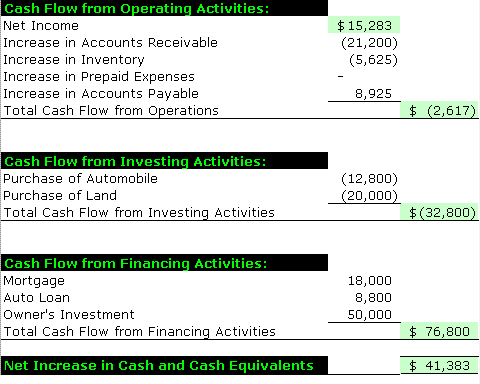
Scienaptic AI provides several financial-based services, including a credit underwriting platform that gives banks and credit institutions more transparency while cutting losses. Its underwriting platform uses non-tradeline data, adaptive AI models and records qr codes have replaced restaurant menus industry experts say it isn’t a fad that are refreshed every three months to create predictive intelligence for credit decisions. Ocrolus offers document processing software that combines machine learning with human verification. The software allows business, organizations and individuals to increase speed and accuracy when analyzing financial documents.
- AI’s abilities around data management collection, analysis, and contextualization—just to name a few—help eliminate many of the decision-making roadblocks cited by business leaders.
- In the United States, Deloitte refers to one or more of the US member firms of DTTL, their related entities that operate using the “Deloitte” name in the United States and their respective affiliates.
- Banks and other financial institutions should balance speed and innovation with risk, adapting their structures to harness the technology’s full potential.
- AI can take on a portion of the workload by automating compliance monitoring, audit trail management, and regulatory report creation.
- Canoe ensures that alternate investments data, like documents on venture capital, art and antiques, hedge funds and commodities, can be collected and extracted efficiently.
The use of AI in finance requires strong financial consumer protection
It is used in fraud detection, credit decisions, risk management, customer service, compliance, and portfolio management, improving accuracy and efficiency. AI is also being adopted in asset management and securities, including portfolio management, trading, and risk analysis. Ayasdi creates cloud-based machine intelligence solutions for fintech businesses and organizations to understand and manage risk, anticipate the needs of customers and even aid in anti-money laundering processes.
AI can even help make pricing personalized, using real-time insights about individual customer preferences, market changes, and competitor activity to optimize price and discounts. GenAI can fill out the needed forms with data provided by the finance team for the staff to review and confirm. AI can help automate and enhance multiple aspects of the financial reporting the difference between a w2 employee and a 1099 employee and analysis process. In the initial stages, it can extract relevant financial information from various data sources. It can then clean and process financial data by identifying errors, inconsistencies, or missing values and notifying finance staff of the areas needing attention.
The company aims to serve non-prime consumers and small businesses and help solve real-life problems, like emergency costs and bank loans for small businesses, without putting either the lender or recipient in an unmanageable situation. We have observed that the majority of financial institutions making the most of gen AI are using a more centrally led operating model for the technology, even if other parts of the enterprise are more decentralized. We all know from experience what good customer service versus bad customer service feels like. And, when you have bad interactions as a customer, it really creates a sour taste. Because of this many financial institutions strive to achieve a high quality customer experience and AI is now helping deliver personalized, responsive, and convenient services at scale. AI can help solve those problems by giving finance teams better insight into possible investment and cost saving opportunities, automating transactional work, generating needed data automatically, and enhancing data visualization.

Operating-model archetypes for gen AI in banking
AI is also changing the way financial organizations engage with customers, predicting their behavior and understanding their purchase preferences. This enables more personalized interactions, faster and more accurate customer support, credit scoring refinements and innovative products and services. The dynamic landscape of gen AI in banking demands a strategic approach to operating models. Banks and other financial institutions should balance speed and innovation with risk, adapting their structures to harness the technology’s full potential.
Challenges Facing AI Adoption
Artificial intelligence (AI) in finance is the use of technology, including advanced algorithms and machine learning (ML), to analyze data, automate tasks and improve decision-making in the financial services industry. Using predictive analytics, finance teams can forecast future cash flows using historical company data, as well as data from the broader industry. While traditional financial forecasts must be manually adjusted when circumstances change, AI-driven forecasts can recalibrate based on new data, helping keep forecasts and plans relevant and accurate.
With Oracle’s extensive portfolio of AI capabilities embedded into Oracle Cloud ERP, finance teams can move from reactive to strategic with more automation wave review opportunities, better insights, and continuous cash forecasting capabilities. A particularly valuable technology in regulatory compliance is natural language processing (NLP). NLP is a branch of AI that lets computers comprehend and generate human language.
While AI will likely never fully replace finance team members, it may become a significant part of their day-to-day work. AI is proving to be more than a buzzy technology fad and one of those rare advancements—like the internet and cloud computing—that promise to revolutionize the business landscape. The OECD promotes a risk-aligned step-by-step implementation of GenAI models in the financial industry. This calls for quality data, sound governance, adequate privacy and strong ethics, as well as the need to monitor both AI concentration and application diversity.
Get Better Data Faster and Grow Your Revenue with Oracle
We have found that across industries, a high degree of centralization works best for gen AI operating models. Without central oversight, pilot use cases can get stuck in silos and scaling becomes much more difficult. Looking at the financial-services industry specifically, we have observed that financial institutions using a centrally led gen AI operating model are reaping the biggest rewards. As the technology matures, the pendulum will likely swing toward a more federated approach, but so far, centralization has brought the best results. The financial industry is well known for being data-driven and embracing emerging technology to provide efficiency, cost savings, detect fraudulent activity and keep operations running smoothly. So, it should come as no surprise that the industry is embracing AI as a tool for innovation and efficiency.

